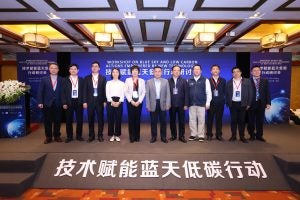(BEIJING May 24, 2021) On April 27, 2021, EDF co-hosted the “Workshop on Blue Sky and Low Carbon Actions Empowered by New Technologies” in Beijing with the Chinese Society for Environmental Sciences, the National Joint Research Center for Tackling Key Problems in Air Pollution Control, and the Beijing Huanding Environmental Big Data Institute. The all-day event showcased cutting-edge technical solutions for the coordinated control of greenhouse gas emissions and air pollution, both in China and internationally. In total, the event convened dozens of experts from government, academia, nonprofits, and the private sector, while the event livestream garnered over 7,000 views in total, receiving positive reviews. (Click here for Chinese and English recordings of the entire event.)

These best practices and big data-supported tools, such as handheld, satellite, and mobile monitoring technologies, have not only enhanced the accuracy of China’s air quality monitoring and enforcement, but also opened up new possibilities for air quality control while the COVID-19 pandemic limited in-person inspections. At the event, based on previous successful experiences from our air quality Mobile Monitoring Challenge launched in 2018, EDF and the Beijing Huanding Environmental Big Data Institute also announced the launch of the Carbon Neutral Technology Innovation Challenge. The Challenge aims to convene city and community pioneers to explore and demonstrate innovative zero carbon pathways by leveraging cutting-edge technology in key areas. The first stage of the Challenge will kick off in Gongchen Subdistrict, a central community located in Fangshan District of Beijing.
Looking forward, the recently announced 14th Five-Year Plan (FYP) for 2021-2025 marks a key period in setting the pace for China’s 2030 carbon peaking and 2060 carbon neutrality goals, as well as its “Beautiful China” initiative for 2035. These key international experiences and lessons from China’s successful air pollution campaign in the 13th FYP are not only crucial for China’s environmental goals, but also tackling climate change and improving air quality worldwide. EDF will continue to leverage these key technologies and lessons to help achieve a lower-carbon, greener, and beautiful China by 2035 and beyond.
